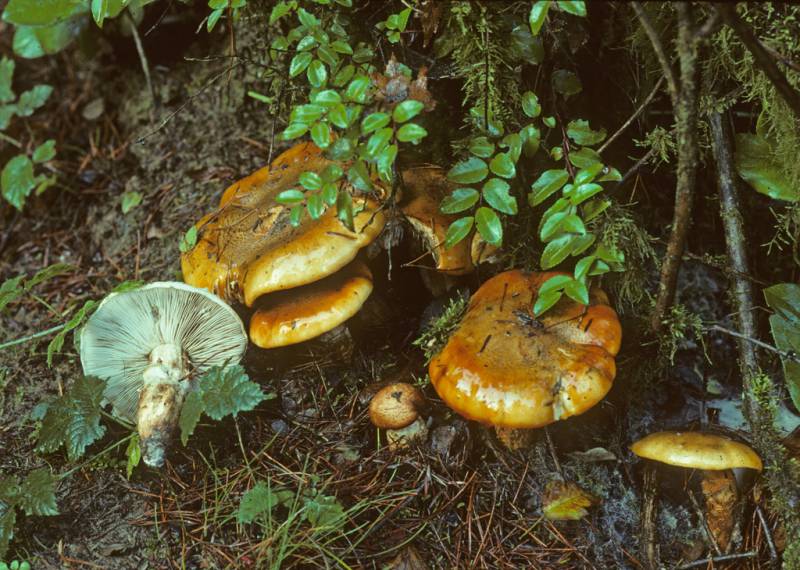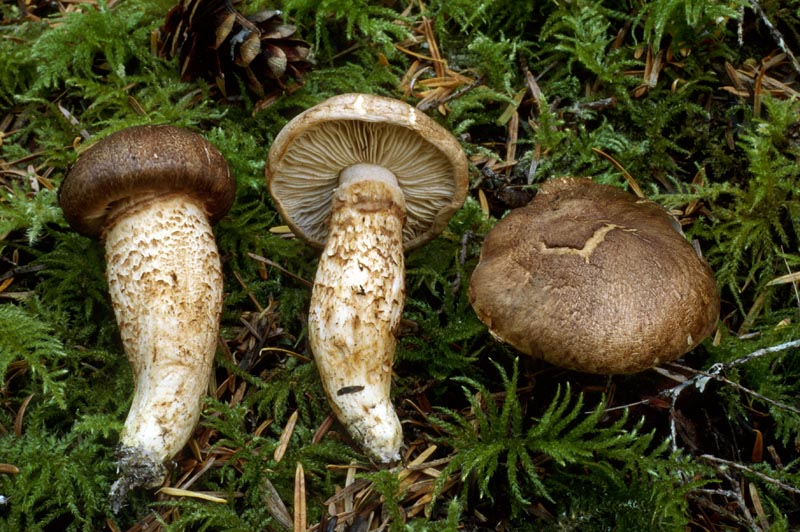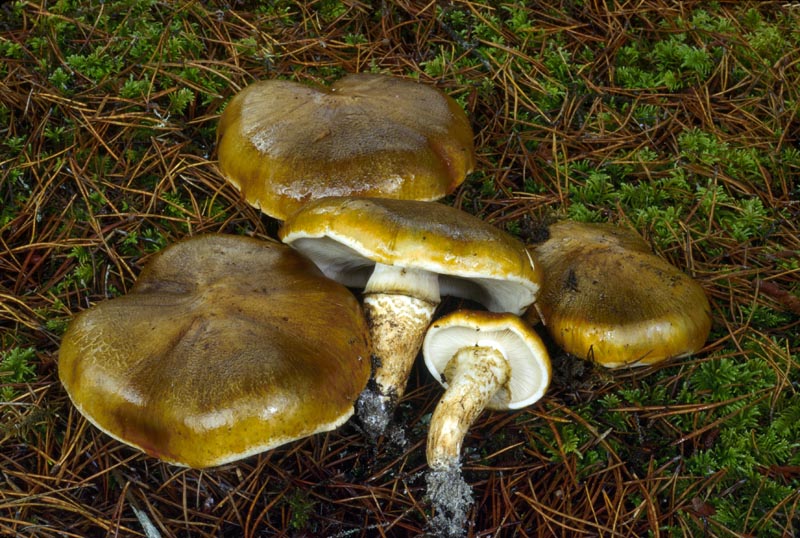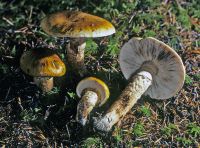Distribution: T. focale is very common in the PNW, occurring under conifers in low-nutrient soils.
Conservation Status: Not of concern
Edibility: The strong unpleasant odor and taste make it inedible.
The strong unpleasant odor and taste make it inedible.
Tricholoma focale, more often known in the PNW as Armillaria zelleri D. E. Stuntz & A. H. Smith or T. zelleri (D. E. Stuntz & A. H. Smith) Ovrebo & Tylutki, is a common fungus that varies rather widely in its size and coloration. Typical forms are stout, with a rounded cap, downward tapering stipe, very firm flesh, cottony ring, strong farinaceous odor, and very bitter taste. The odor is even present in the soil from which the fruitbodies arise, due to large amounts of mat-forming mycelium. The color varies from a mix of orange and olivaceous green to tans and browns with merely a hint of orange. The gills are whitish at first, but develop rusty orange stains fairly quickly. The stipe usually is scaly below the ring and colored somewhat like the cap. Dull colored fruitbodies could be mistaken for T. magnivelare, although the strong farinaceous odor of T. focale quickly separates the two. Brighter orange fruitbodies are distinguished from T. aurantium (Schaeffer: Fries) Ricken by the presence of the veil; in the latter species, there usually is a sharp contrast in color of the stipe where a ring would otherwise occur, but no actual remnants of a veil.
PNW Herbaria: Specimen records of Tricholoma focale in the Consortium of Pacific Northwest Herbaria database
CalPhotos: Tricholoma focale photos








